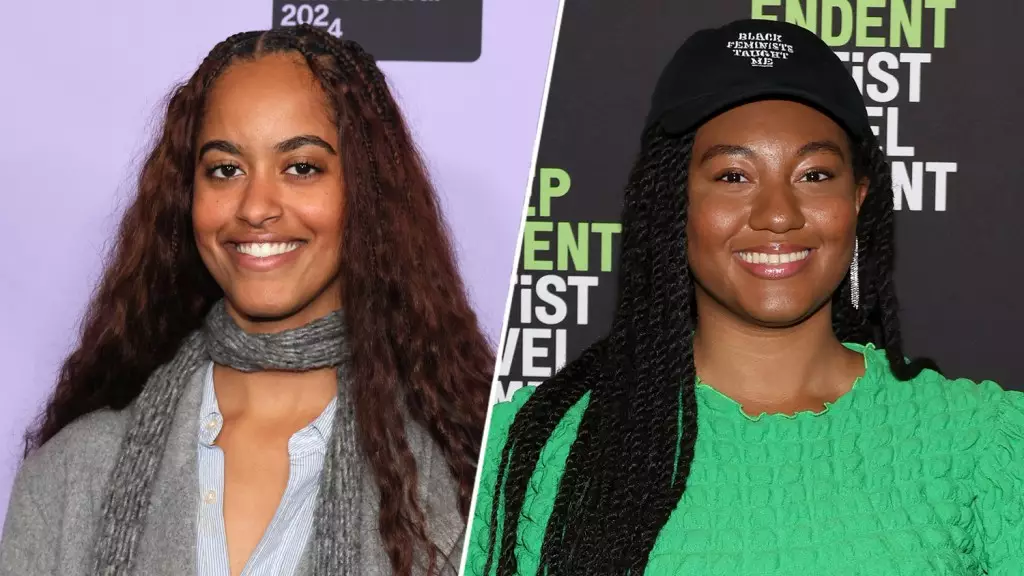In the realm of creativity, the line between inspiration and appropriation is often tenuous. This precarious balance has recently come to the forefront following Malia Obama’s foray into filmmaking at the 2024 Sundance Film Festival. After her short film debuted, attention gravitated towards one specific allegation: that Obama had borrowed elements from fellow filmmaker Natalie Jasmine Harris’s acclaimed work, “Grace.” In that moment, a simple narrative of artistic emergence spiraled into a convoluted debate about originality, influence, and the responsibilities of those in power.
In a captivating essay published in Business Insider, Harris articulated her emotional turmoil upon discovering the striking similarities between her film and a recently aired Nike ad featuring the WNBA’s A’ja Wilson. Harris, a passionate director in her own right, described a scene from her 14-minute Southern Gothic narrative, “Grace,” involving the playful childhood game of pat-a-cake—a moment seemingly echoed in Obama’s commercial. This striking manifestation of convergence in creativity ignited a discussion about the ethics of inspiration in the limelight of the film industry, particularly when that limelight is shared with individuals from prominent dynasties.
Privilege and Responsibility
The stakes of this debate are exacerbated by the identities involved. Malia Obama, as the daughter of former President Barack Obama, carries with her the weight of formidable legacy and societal expectations. Critics might argue that her privileged position affords her unique opportunities and visibility, enabling her to navigate the artistic domain with unchallenged ease. However, this instance raises an imperative question: does privilege diminish the accountability that should accompany one’s creative endeavors?
Harris’s sentiments remind us of the broader systemic issues within the creative industries where marginalized voices often find themselves unheard. The discontent expressed by Harris encapsulates a familiar narrative in the art world—the struggle of independent creators against the ceaseless, overwhelming tide of mainstream brands that often seek to capitalize on innovative ideas without giving deserved credit or recognition. When brands opt for established names over aspiring artists, they perpetuate a cycle of exclusion that stifles originality.
Innovation vs. Imitation
Harris asserts that the reflection of her cinematic style in Obama’s project deserves acknowledgment, not dismissal as merely accidental overlap. This perspective is vital in understanding how cultural narratives are shaped, yet it also uncovers a deeper frustration surrounding the opportunities available to rising filmmakers. The notion that artistic merit and innovation stem more from recognized names rather than raw talent threatens the essence of storytelling itself. Harris poignantly asks why, if her creative vision was sought after, she wasn’t invited to the table where the contract was signed.
This critical query highlights an ongoing issue within the industry: the overshadowing of passionate voices by household names. Reinforcing conventional narratives undermines the rich diversity that independent filmmakers can contribute, leading to a homogenized cinematic experience. The barriers for newcomers are already substantial; instances like this only serve to reinforce a cycle where innovative ideas are overshadowed by an established pedigree.
The Call for Change
As the dialogue around this incident unfolds, it is clear that Harris’s frustration extends beyond herself—a reflection of a community yearning for respect and recognition. She points toward a deeply ingrained system of favoritism that ultimately hampers not just individual artists but the tapestry of storytelling as a whole. The artistic ecosystem thrives on fresh perspectives; thus, the dismissal of these voices limits cultural growth and hinders the emergence of narratives that challenge prevailing norms.
In a society that purports to champion diversity and creativity, the hesitation to speak out against figures like Malia Obama and brands like Nike speaks volumes about the existing layers of privilege. Harris’s initial reluctance to voice her concerns underscores a widespread fear that independent artists may face backlash for challenging high-profile personalities or institutions. This fear should not dictate the conversations necessary for growth and innovation in creative fields.
In this complex landscape, it becomes imperative for both established creators and brands to engage actively with the independent artistic community. It’s about more than just addressing grievances—it’s about fostering an environment where inspiration flourishes without overshadowing the origins of that inspiration.



Leave a Reply